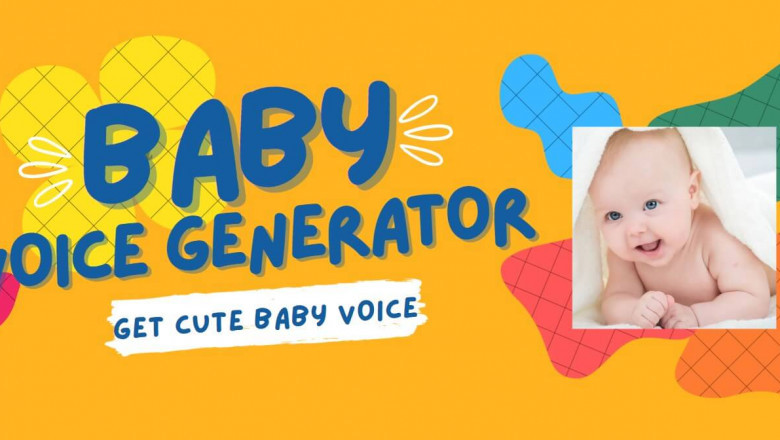views
As artificial intelligence continues to evolve, one of the most fascinating innovations is the Child AI voice generator. This technology uses deep learning and neural networks to create realistic synthetic voices that sound like children. It has gained attention for its diverse applications in entertainment, education, and accessibility, while also sparking conversations around ethics and responsible use.
In this article, we’ll explore what a Child AI voice generator is, its practical uses, benefits, and potential concerns.
What Is a Child AI Voice Generator?
A Child AI voice generator is a type of text-to-speech (TTS) technology that uses artificial intelligence to create lifelike child voices. Unlike traditional robotic voices, this technology can mimic the natural tone, rhythm, and emotion of a child’s speech. Developers train these models using audio data, allowing them to replicate the unique pitch and nuances of a child's voice.
This tool is now being adopted in various sectors including animation, gaming, storytelling, education, and assistive technology.
Common Uses of Child AI Voice Generators
1. Animation and Video Games
One of the most popular uses of the Child AI voice generator is in animation and gaming. Content creators can bring young characters to life without hiring child actors. This saves time, avoids labor law restrictions, and provides flexibility in voice direction and edits.
2. Audiobooks and Storytelling
Many educational and entertainment apps now use AI-generated child voices to narrate children's books. The engaging and relatable voice can enhance the storytelling experience for young listeners.
3. E-learning and Educational Tools
Interactive learning platforms are also integrating child-like voices to make lessons more appealing. Kids are more likely to engage with voices that sound like their peers, making the learning process fun and immersive.
4. Accessibility Tools
A Child AI voice generator can be helpful for non-verbal children or those with speech disorders. Customized AI voices can serve as their communication tool, offering a more personalized and empowering experience.
5. Marketing and Advertising
Some brands targeting young audiences use child-like voices in ads, jingles, or educational product demonstrations to build a more relatable connection with their audience.
Advantages of Using Child AI Voice Generators
✔️ Cost Efficiency
Hiring child voice actors involves contracts, studio time, and recurring payments. A Child AI voice generator reduces costs while maintaining consistent quality across different projects.
✔️ Convenience and Flexibility
Content creators can generate multiple voice variations, adjust emotions, and correct errors quickly. AI voices are available 24/7 and don’t require rescheduling or re-recording.
✔️ Scalability
Whether you’re creating content for one language or multiple, AI-generated voices can be scaled across different regions and accents with minimal effort.
✔️ Data Personalization
With AI, it’s possible to create custom child-like voices tailored to specific character profiles or learning levels. This helps increase engagement and emotional connection.
✔️ No Legal Restrictions on Working Hours
Unlike human child actors, who are bound by strict labor laws, AI voices are not limited by time restrictions, enabling around-the-clock production.
Disadvantages and Ethical Concerns
❌ Lack of Human Emotion
Even with advancements, AI voices can still lack the deep emotional range and authenticity of a real child. Subtle expressions like hesitation, sarcasm, or excitement may sound artificial.
❌ Ethical Issues and Deepfake Risks
A major concern is the misuse of Child AI voice generators. Synthetic voices can be manipulated for inappropriate or misleading content. There are also risks associated with voice cloning without consent, especially involving children.
❌ Job Displacement
As AI becomes more capable, it may reduce the demand for human child voice actors, affecting employment opportunities in the creative industry.
❌ Privacy and Consent
If a child’s voice is used to train AI models without proper permission, it raises serious privacy issues. Strict guidelines are needed to ensure ethical data sourcing and transparency.
❌ Over-Reliance on Technology
Dependence on AI may hinder the creativity and spontaneity that come from working with real child actors. It may also discourage the development of young talent in voice acting.
The Future of Child AI Voice Generators
The development of Child AI voice generator technology shows no signs of slowing down. As models become more advanced, their voices will sound even more human-like, capable of conveying a wider range of emotions and expressions. Companies must take ethical considerations seriously, ensuring the technology is used responsibly and for the benefit of society.
Collaboration between technologists, educators, parents, and policymakers will be key to striking the right balance between innovation and responsibility.
Final Thoughts
The Child AI voice generator is a powerful tool that’s transforming how we create and interact with digital content. Its ability to deliver realistic child-like voices has many benefits—especially in storytelling, education, and assistive technology. However, it also brings challenges related to ethics, privacy, and authenticity that must be carefully managed.
As with any AI advancement, the goal should be to enhance human creativity, not replace it. When used wisely, Child AI voice generator technology can open doors to more engaging, inclusive, and accessible experiences for people of all ages.






















Comments
0 comment